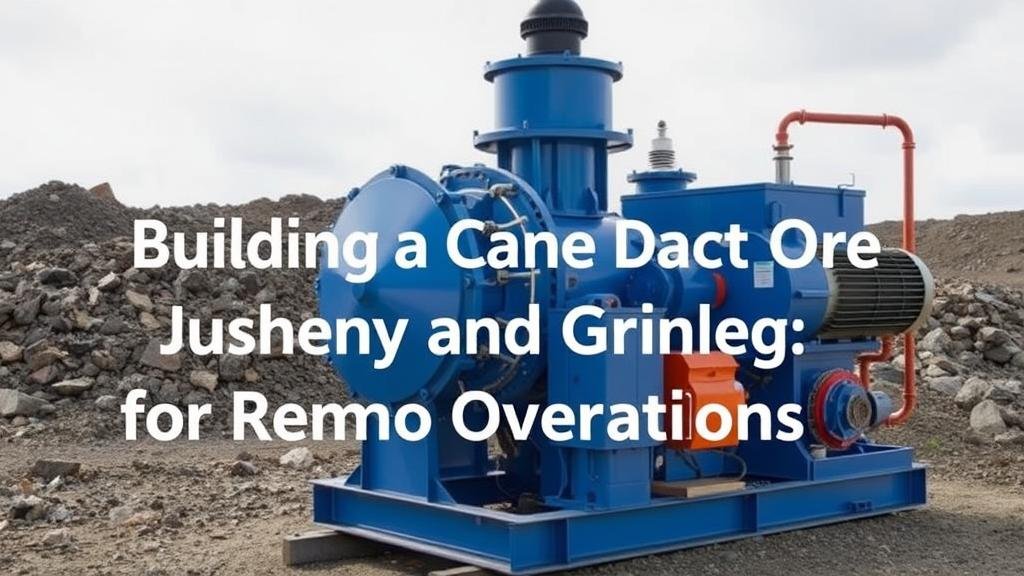Building a Compact Ore Crushing and Grinding System for Remote Operations
Building a Compact Ore Crushing and Grinding System for Remote Operations
In the mining industry, efficient ore processing is crucial for maximizing recovery rates and profitability. Compact ore crushing and grinding systems allow operations in remote locations to function effectively despite logistical challenges. This article explores tailored solutions for developing such systems, emphasizing the significance of design, technology integration, and operational efficiency.
Understanding the Needs for Remote Operations
Remote mining sites often face unique challenges, including limited infrastructure, accessibility issues, and variable ore characteristics. To address these challenges, a compact ore processing system should prioritize:
- Mobility: The system should be easily transportable to accommodate changing operational sites.
- Efficiency: High throughput and effective particle size reduction are necessary to minimize energy consumption.
- Reliability: The equipment must operate under harsh conditions, requiring minimal maintenance.
Essential Components of Compact Systems
A compact ore crushing and grinding system typically comprises crushers, grinding mills, and auxiliary equipment such as conveyors and dust collectors. Each component plays a vital role:
- Crushers: Secondary and tertiary crushers like cone crushers or impact crushers should be selected for their ability to reduce particle size while maintaining a small footprint.
- Grinding Mills: Modular grinding solutions, such as vertical roller mills or ball mills, can provide flexibility in capacity without extensive space requirements.
- Auxiliary Equipment: Vibrating screens, hoppers, and feeders should optimize material flow and enhance overall system integration.
Case Studies of Successful Compact Systems
Several mining operations have successfully implemented compact ore processing systems that have improved efficiency and reduced operational costs:
- Example 1 – Remote Gold Mine in Australia: This site used a combination of mobile jaw crushers and closed-circuit ball mills. The setup allowed for quick setup and disassembly, leading to a 30% increase in processing efficiency.
- Example 2 – Iron Ore Project in Northern Canada: The use of modular grinding units enabled the facility to process lower-grade ores without significant capital investment. increased accessibility to remote sites allowed the operation to meet regulatory compliance while maximizing yield.
Technology Integration for Enhanced Performance
Integrating advanced technologies can further enhance the performance of compact ore processing systems. Key technologies include:
- Automation: Automated systems for monitoring and controlling crushing and grinding parameters can optimize performance and reduce labor costs.
- Real-time Data Analytics: Useing IoT devices can provide real-time data on equipment performance, allowing for predictive maintenance and minimizing downtime.
- Energy Efficiency Solutions: Utilizing energy-efficient motors and variable frequency drives can significantly lower operational costs and reduce the carbon footprint.
Addressing Operational Challenges
Operational challenges in remote environments necessitate careful planning and consideration. Some potential concerns include:
- Supply Chain Issues: Ensuring consistent availability of spare parts and consumables is critical. Partnering with local suppliers can mitigate delays.
- Training of Local Workforce: Investing in local workforce training ensures safe and efficient operations, maximizing production without extensive reliance on external personnel.
- Environmental Compliance: Compact systems should be designed with environmental considerations in mind, minimizing dust and noise pollution.
Conclusion: Actionable Takeaways for Remote Operations
Building a compact ore crushing and grinding system for remote operations requires a strategic approach that balances efficiency, reliability, and mobility. Key steps include:
- Conducting thorough site assessments to understand specific needs and challenges.
- Selecting high-quality, compact processing equipment tailored to ore types.
- Useing advanced technologies for real-time monitoring and operational efficiency.
- Prioritizing training programs for local staff to ensure safety and competency.
By following these guidelines, mining companies can enhance operational performance, reduce costs, and maintain productivity in even the most challenging environments.



